How to choose a jewelry box?
Tired of tangled necklaces or lost earrings? Poor storage can damage precious items. Choosing the right jewelry box keeps your treasures safe, organized, and looking their best for years to come.
To choose a jewelry box, consider its size based on your collection, ensure it has a protective lining like velvet, check for suitable compartments for different items, verify sturdy construction for durability, and pick a style you love. Think about security features if needed.
So, you have a basic idea of what to look for. But understanding the specific features and why they matter will help you make the best choice for your valuable pieces. Let's explore the details that make a difference.
What should I look for in a jewelry box?
Feeling lost in the options for jewelry boxes? Choosing poorly means wasted money and potential damage to your favorite pieces. Let's focus on the essential features you need to look for.
Look for a soft, non-abrasive lining, compartments suited to your jewelry types (rings, necklaces, bracelets), durable construction, secure closures (latches or locks), and an appropriate size for your current and future collection. Also consider the materials and overall design.
!
Let's dive deeper into these features. The inside matters just as much as the outside.
Why Lining is Crucial
A soft lining, usually velvet, suede, or a similar non-abrasive fabric, is non-negotiable. It prevents scratches on metal surfaces and gemstones. It also helps absorb moisture and slow down the tarnishing process, especially for silver jewelry. A poorly lined or unlined box can cause more harm than good.
Compartments for Organization
Think about what you own.
- Rings: Look for slots or rolls to keep them upright and separate.
- Necklaces/Chains: Hooks or individual narrow compartments are essential to prevent tangling, which can be a nightmare to undo and can damage delicate chains.
- Earrings: Small compartments or padded sections with holes work well for studs and dangles.
- Bracelets/Watches: Larger, open compartments or cushioned pillows are ideal.
A mix of these tailored spaces makes a box truly functional.Construction and Size
Look for sturdy hinges and well-fitted lids. The box should feel solid, not flimsy. Consider materials like wood or high-quality composite boards for longevity. Also, think about your collection's size now and anticipate growth. A slightly larger box is often better than one you'll outgrow quickly.
| Feature | Benefit | Look For |
|---|---|---|
| Soft Lining | Prevents scratches, reduces tarnish | Velvet, suede, non-abrasive fabric |
| Varied Compartments | Keeps items organized, prevents tangling | Hooks, slots, small/large sections |
| Sturdy Build | Ensures durability, protects contents | Solid materials, strong hinges, secure lid |
| Appropriate Size | Accommodates current & future collection | Measure needed space, consider future growth |
What makes a good jewellery box?
Ever bought a box that looked great initially but quickly showed signs of poor quality? It's frustrating when hinges loosen or the material peels. Knowing what defines a good jewelry box helps you invest wisely.
A good jewelry box combines protective features (soft lining, secure sections) with durable construction (solid materials, strong joints), thoughtful design for usability, and an aesthetic appeal that suits the owner. It should effectively organize and safeguard the jewelry inside.
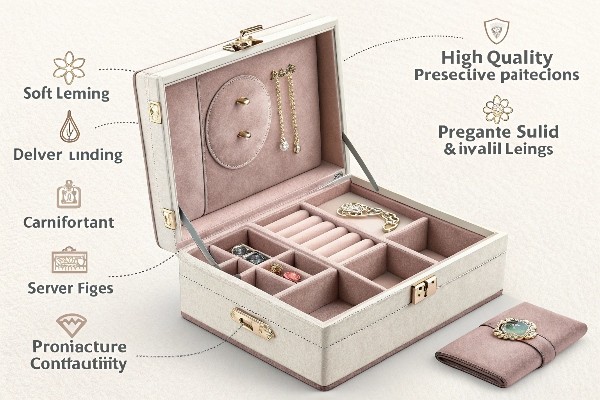
Let's explore the hallmarks of quality in more detail. It often comes down to craftsmanship and materials.
Craftsmanship Details
A well-made box shows attention to detail. Look for smooth finishes, both inside and out. Compartment dividers should be firmly in place and neatly finished. Lids should align perfectly with the base, and hinges or clasps should operate smoothly and feel secure. Premium boxes often feature precise construction, sometimes using advanced techniques. For example, in the high-end packaging world (which includes luxury jewelry boxes), techniques like grooving are used instead of basic die-cutting to create perfectly sharp, 90-degree corners on rigid boxes[^3][^4]. This not only looks much cleaner and more premium but also adds structural integrity. This level of precision usually comes from specialized machinery.
Material Integrity
The choice of materials significantly impacts quality. Solid wood offers excellent durability but can be heavy. High-density fiberboard or quality composite boards, often used in rigid box construction, provide great structure and can be covered with various materials like premium paper, book cloth, or leatherette. The internal lining should be high-quality, plush, and securely adhered without bumps or gaps.
Functional Design
Beyond just storage, a good box is easy to use. Drawers should slide smoothly. Lids should open easily but stay closed securely. The layout should make sense for accessing your most-worn pieces easily while keeping everything organized and protected.
Think about these quality indicators:
- Joints & Corners: Are they clean, tight, and strong? (Sharp corners often indicate quality manufacturing[^3][^4]).
- Lining: Is it smooth, fully adhered, and soft?
- Hardware: Do hinges, clasps, and locks work smoothly and feel robust?
- Overall Feel: Does the box feel solid and well-balanced?
What is the best material for jewelry boxes?
Confused by material choices like wood, leather, fabric, or even metal? The material affects the box's look, durability, weight, and price. Choosing the right one depends on your priorities.
There's no single "best" material. Wood offers durability and classic appeal. Leather provides a luxurious feel. Fabric boxes are often softer inside. Quality composites can be sturdy and versatile. Consider durability, aesthetics, protective qualities, and budget.

Let's compare some common options to help you decide. Each has its pros and cons.Wood Boxes
- Pros: Very durable, classic aesthetic, can often be repaired or refinished, offers good protection.
- Cons: Can be heavy, generally more expensive, sensitive to humidity changes if not well-sealed.
Leather or Leatherette (PU/Faux Leather) Boxes
- Pros: Luxurious appearance and feel, relatively lightweight, available in many colors.
- Cons: Real leather is expensive; leatherette quality varies hugely and can peel or crack over time, may offer less rigid protection than wood.
Fabric-Covered Boxes
- Pros: Can have soft exteriors, huge variety of colors and patterns, often lightweight.
- Cons: Can stain easily, exterior offers less impact protection, structural integrity depends heavily on the underlying material (often cardboard).
High-Quality Composite / Rigid Boxes
- Pros: Excellent structural strength, allows for very precise construction (like sharp corners[^3][^4]), can be covered in luxurious papers[^1], fabrics, or leatherettes, often used for high-end retail and gift packaging. Relatively lightweight for their strength.
- Cons: Quality is highly dependent on the manufacturing process and materials used (like specific boards, glues, and covering papers[^1]). May incorporate magnets for closure[^1].
- Note: This type is common in the luxury packaging we see for watches, perfumes, and high-end jewelry gifts, often produced using specialized machinery.
Here's a quick comparison:
| Material | Durability | Aesthetics | Protection (Structural) | Typical Cost | Key Feature |
|---|---|---|---|---|---|
| Solid Wood | High | Classic, Natural | High | Med-High | Longevity, traditional look |
| Leather/ette | Med-High | Luxurious, Modern | Medium | Med-High | Tactile feel, style |
| Fabric-Covered | Low-Med | Varied, Soft | Low-Medium | Low-Med | Design variety |
| Rigid Composite | High | Premium, Sharp | High | Med-High | Structure, high-end finish |
Choose based on whether you prioritize timeless durability (wood), modern luxury (leather), design variety (fabric), or a strong, premium structure often seen in gift packaging (rigid composite).
What are the best jewellery boxes?
Looking for top-tier protection and style for your valuable jewelry collection? Settling for an average box might not be enough, especially for cherished items. Let's define what makes a jewelry box truly "best."
The "best" jewelry boxes excel in craftsmanship, use premium materials, offer excellent protection and organization, and suit their intended purpose, whether for personal use, travel, or as luxury gift packaging[^5][^6]. Quality construction, often involving advanced manufacturing, is key.
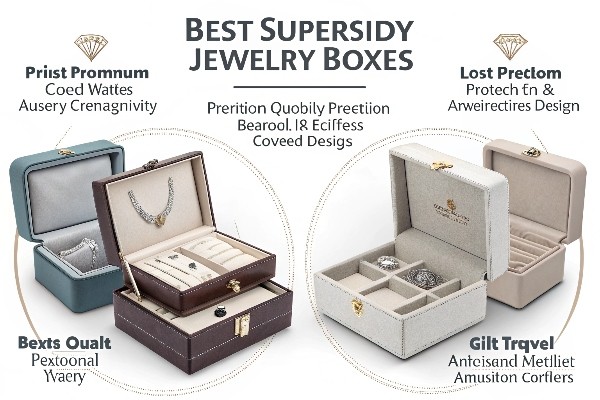
The concept of "best" often relates to specific needs and contexts.
Premium Personal Use Boxes
For your own collection at home, the "best" box focuses on long-term durability, optimal organization tailored to your specific jewelry types, and high-quality materials that prevent damage and tarnish. This might mean a large wooden armoire with many drawers and compartments, or a meticulously crafted leather case. The focus is on protection, organization, and longevity.
High-End Travel Cases
For travel, the "best" box is compact, lightweight yet sturdy, and designed to keep items secure and untangled during transit. It needs secure closures and well-designed internal compartments to prevent movement.
Luxury Gift & Retail Boxes
In the commercial world, especially for brands selling watches, fine jewelry, or cosmetics, the "best" boxes serve as part of the product presentation[^5][^6]. These are often rigid boxes, known for their sharp edges, sturdy feel, and ability to be wrapped in premium materials.
- Manufacturing Insight: Creating these consistently high-quality boxes, especially at scale, requires specialized industrial machinery12. At Kylin Machinery, we design and build machines specifically for this purpose. Features like automated gluing, precise board placement, robotic arms for positioning (sometimes using AI camera systems for high accuracy1), and automated wrapping ensure every box meets luxury standards. This technology allows brands to deliver that premium unboxing experience consistently. Techniques like grooving for perfect corners34 are standard in this level of production.
So, the "best" depends on your needs, but common threads are quality materials, excellent craftsmanship (often machine-aided for consistency), and thoughtful design for protection and usability.Conclusion
Choosing the right jewelry box involves matching your needs with the box's size, features, and materials. Prioritize protective linings, good organization, and sturdy construction. Remember, the quality often reflects the care taken in manufacturing.
-
Details from Kylin Machinery specifications for a fully automatic rigid box machine (like for watch or jewelry boxes), highlighting AI positioning and automation. ↩ ↩
-
Information from Kylin Machinery on the KY-420B auto rigid box machine, suitable for various luxury boxes including jewelry boxes.
-
From Kylin Machinery documentation comparing grooving and die-cutting effects on rigid box corners. ↩
-
Additional details from Kylin Machinery on using grooving for special book cases and contrasting it with die-cutting for rigid boxes. ↩




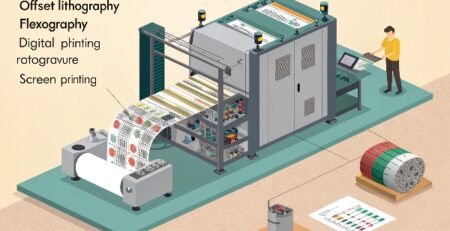
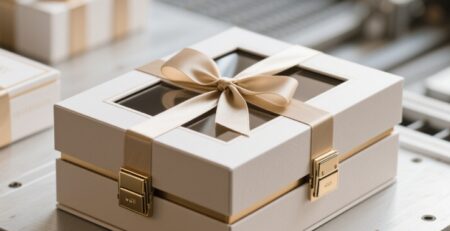
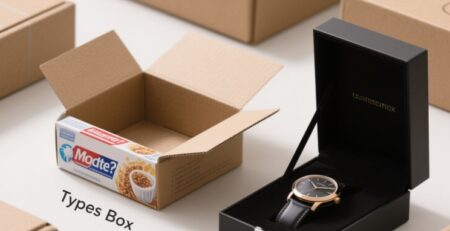
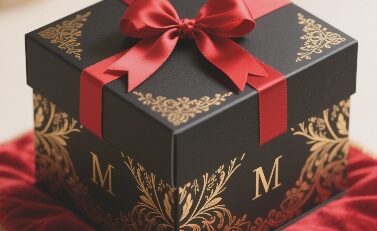

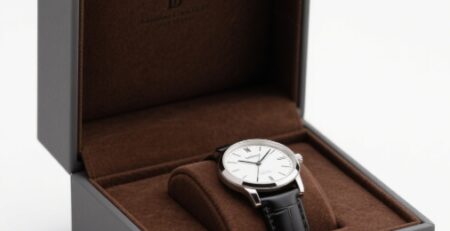

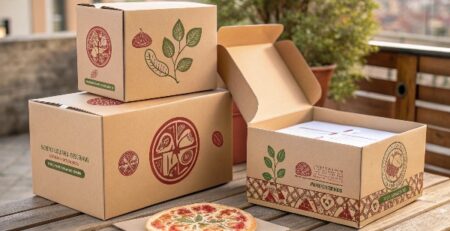
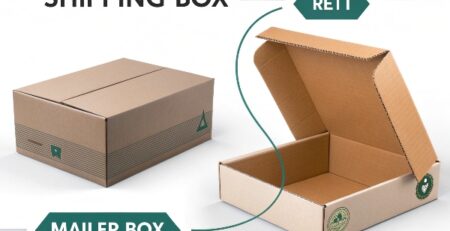
发表回复